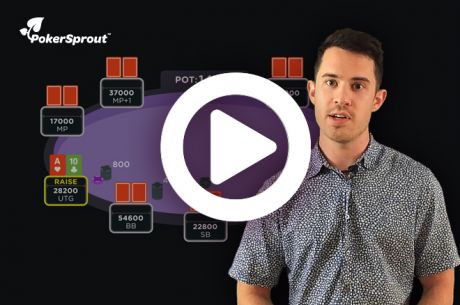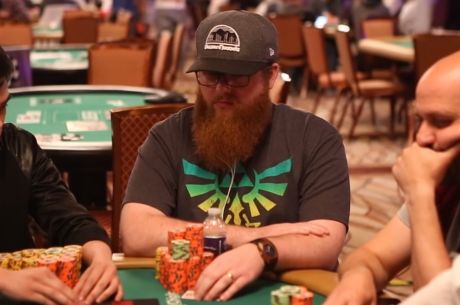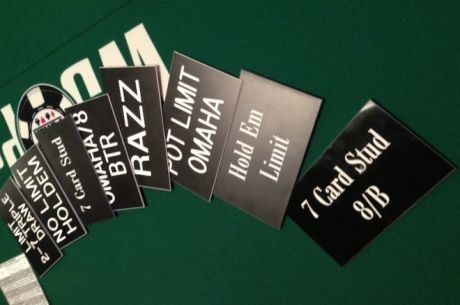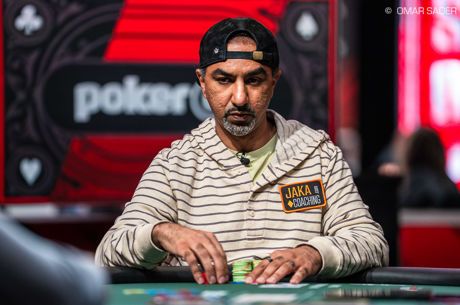Why Stack-to-Pot Ratio Determines All Tournament Play
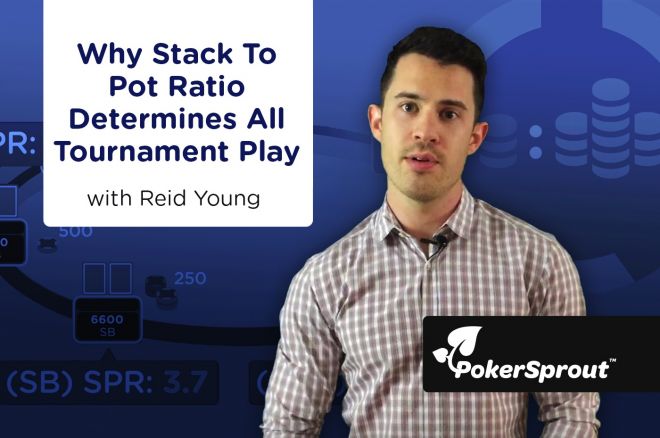
It's the middle stage of the tournament. You look down at Q?10? in the small blind. It folds around and you open the action with a raise to twice the big blind. Your solid and aggressive opponent in the big blind calls, making the pot 4 BBs. The flop comes J?9?3?. What should you do?
To answer the question, you need a critical piece of information �� the stack-to-pot ratio. Let's get a firm hold on using the stack-to-pot ratio (SPR) to take the best action in your next tournament.
Profitable poker is a matter of defining the best risk for the potential reward for each of your actions. Every choice you make is an opportunity to outthink and to outplay your opponent. Adding that missing bit of information in the hand, the SPR, lets you know when to hit the gas or when to pump the breaks.
Larger stack sizes demand caution, especially in tournament play when risking all of your chips means you could be in for a long walk to the parking lot. Meanwhile with shorter stacks, the value of your particular hand in a particular situation can very often tip the scales toward you wanting to be all in to win a massive portion of your stack.
Stack-to-pot ratio helps define the riskiness of actions with a particular hand. The SPR gives you a clear action in several cases. For example, with 20 big blind stacks, if you bet with J?9? on a J?8?3? flop and face a raise, you are holding a monster! However, if you face the same scenario with 200 big blind stacks, then you should begin to worry how that raise is going to affect the rest of the hand. Will you want to call down with one pair? Will the turn and/or river be scary for your hand? Are you already way behind what your opponent has?
Check out this quick PokerSprout video, then see if you can answer the questions at the end of the article with a firm understanding of the stack-to-pot ratio.
Back to the Q?10? hand. The flop is J?9?3?, the pot is 4 BBs, and you have a decision, and an SPR.
1. The stacks are 20 BBs, making the SPR 5. What do you do?
Try a check-raise all in. Your opponent might bluff very often, and even if you are called, you have an excellent chance of winning. Make the last raise and you can win the pot by inducing folds as well. Also, and perhaps most importantly, when you check this type of flop in future, your opponent is going to be confused about bluffing.
2. The stacks 30 BBs, making the SPR 7.5. What do you do?
Try continuation betting with the intention of reraising all in. With an SPR of 7.5, your opponent has enough room to make a flop raise to a smaller size than an all-in. What's the worst case scenario? You get called by a great hand like a set and you still have around a 40% chance of winning! You have a great chance of picking up the pot, probably around 12 big blinds. Boom!
3. The stacks are 70 BBs, making the SPR 17.5. What do you do?
A continuation bet makes a lot of sense for this one. If you're raised, you can call and play a lot of turns that would be scary for other hands you might want to use when you bet and call, hands like A?9?. Also, an all-in raise risks a pretty big stack. If you reraise smaller, then your opponent might put you all in, and calling off a larger stack with queen-high isn't exactly the path to victory! This way, if the turn comes a non-diamond eight, you have some very strong hands and some very weak hands that you play the same way. Nice.
Different SPRs demand different actions. Not only that, SPR paves the way to a balanced game plan that allows you to intuit a strategy extremely difficult to exploit.
If you're on top of SPR, share a comment describing a time that knowing the SPR helped make your next action very clear, and maybe even saved your tournament life.
Reid Young is lead instructor at PokerSprout, an on-demand video education service where bite-sized and laser-focused videos turbo charge your poker strategy quickly and efficiently. Start your free trial today at PokerSprout.com?and experience a better way to learn poker strategy.
Want to stay atop all the latest in the poker world? If so, make sure to get PokerNews updates on your social media outlets. Follow us on Twitter and find us on both Facebook and Google+!

